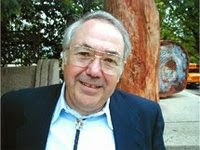 I am proud of many things of the things I have accomplished during my career. One, I was the founding editor of Prologue, the historical quarterly published by the National Archives. Of course, my books have meant a great deal to me and to the people I wrote about, like John Stokes, who as a high school student in rural Virginia led a student strike for better schools that became part of the Civil Rights movement—Students on Strike; Lex Layson, who spent her youth as a Japanese prisoner in the Dutch East Indies during World War II—Lost Childhood; and Joseph Lekuton, a Massai young man who excelled in school in Kenya, became a school teacher in McLean, Virginia, and then returned to his tribal homeland where he was elected to Parliament and is being talked about as president of Kenya-- Facing the Lion.
I am proud of many things of the things I have accomplished during my career. One, I was the founding editor of Prologue, the historical quarterly published by the National Archives. Of course, my books have meant a great deal to me and to the people I wrote about, like John Stokes, who as a high school student in rural Virginia led a student strike for better schools that became part of the Civil Rights movement—Students on Strike; Lex Layson, who spent her youth as a Japanese prisoner in the Dutch East Indies during World War II—Lost Childhood; and Joseph Lekuton, a Massai young man who excelled in school in Kenya, became a school teacher in McLean, Virginia, and then returned to his tribal homeland where he was elected to Parliament and is being talked about as president of Kenya-- Facing the Lion.But I am most proud of having started the first intern program for American Indians at the Smithsonian. When I started there in 1972, no Indians were employed by the Smithsonian. Soon after I arrived at the Anthropology archives I was visited by an Indian working for the Bureau of Indian Affairs who asked me if I would allow Indians to do research in the anthropology archives. I was startled by the request because anyone could come and do research. He pointed out that Indians thought they needed a PHD to do research at the Smithsonian and, besides, few could afford the trip to
______________________________________________________________________________
Dr. Herman J. Viola is a curator emeritus at the
Smithsonian's National Museum of Natural History. A specialist on the history
of the American West, he served as director of the Museum's National
Anthropological Archives in addition to organizing two major exhibitions for
the Smithsonian. "Magnificent Voyagers" told the story of the United
State Exploring Expedition of 1838-42, and "Seeds of Change" examined
the exchange of plants, animals, and diseases between the Old and the New Worlds
as a result of the Christopher Columbus voyages of discovery. Prior to joining
the staff of the Smithsonian Institution in 1972, he was an archivist at the
National Archives of the United States, where he launched and was first editor
of Prologue: The Journal of the National Archives.
Dr. Viola's research specialties include the American Indian, the Civil War, and the exploration of the American West. He has authored numerous books on these topics, including Exploring the West, After Columbus, Warrior Artists, Warriors in Uniform, The North American Indians, and Little Bighorn Remembered: the Untold Indian Story of Custer's Last Stand. He is also the author of the middle school social studies textbook, Why We Remember.
Dr. Viola received his B.A. and M.A. from Marquette University, and his Ph.D. from Indiana University/Bloomington.


No comments:
Post a Comment